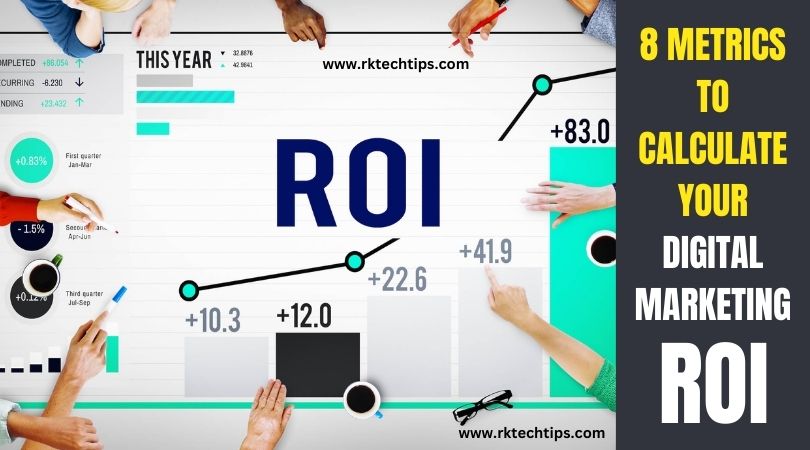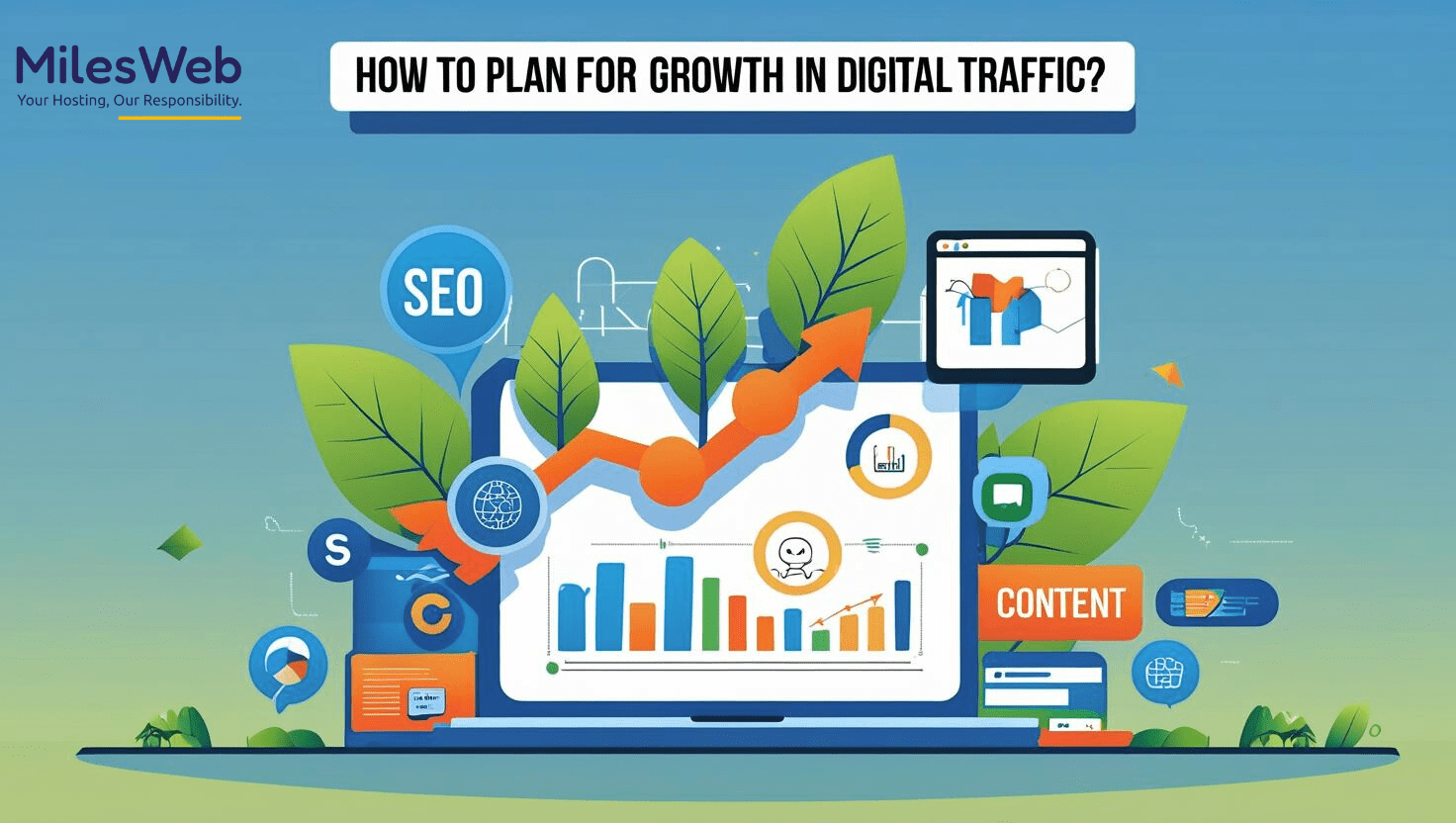Measuring the return on investment (ROI) of digital marketing is crucial for understanding campaign performance and directing budget and efforts towards tactics that drive the highest returns.
While ROI can be calculated simply by comparing revenue or profits to costs, it is important to examine multiple metrics to get a complete picture.
Here are 8 key metrics to track when calculating and assessing your digital marketing ROI.
1. Revenue
Ultimately, marketing exists to drive revenue and profits. So when determining ROI, start by looking at sales or other revenue generated during the timeframe of your marketing initiatives. Compare this to costs spent over the same period to see your raw monetary return. This revenue-driven approach shines a light on the direct financial impact of marketing.
Set up ecommerce tracking and integrate your CRM system to accurately connect marketing efforts to revenue. Analyze which campaigns, channels and assets directly contribute to sales.
2. Customer Acquisition Cost
Customer acquisition cost (CAC) is another way to assess marketing ROI, especially for lead generation-focused efforts. Add up all the marketing costs used to acquire a new customer and divide it by the number of customers gained.
For example, if you spent $10,000 on marketing over a period where you generated 200 new customers, your CAC would be $50 ($10,000/200). Compare CAC over time and target decreases.
3. Lifetime Value
While CAC shows cost to immediately acquire customers, examining lifetime value (LTV) measures the longer-term ROI picture. calcolatrice online gratis LTV by forecasting all the profit you expect to generate from a customer in the future, factoring in repeat sales, referrals and other loyalty effects.
If LTV is higher than CAC, this indicates positive ROI over the full customer relationship. Extend analysis to different segments.
4. Cost Per Lead
For campaigns aimed at generating leads, track cost per lead (CPL). Add up total marketing costs for a period and divide it by the number of leads captured. As with CAC, monitor this metric over time and across tactics to identify where your marketing budget is most effectively creating leads.
Integrate lead management and marketing analytics to connect leads directly to campaigns. Lower CPL indicates higher efficiency at lead conversion.
5. Traffic
Website traffic is one of the most basic indicators of marketing success. More traffic signifies greater visibility and reach. While not directly revenue-driven, increased traffic creates more opportunities to convert visitors into customers.
Closely monitor traffic from your marketing initiatives and benchmark against past performance or competitor sites. Traffic can be further analyzed for engagement and conversion potential.
6. Search Rankings
For SEO focused efforts, where do you rank for target keywords? Improved rankings signal that your content and authority with search engines is strengthening, which can boost traffic and conversions over time.
Track rankings manually or use automated rank tracking tools. Progress up the first page of results indicates positive momentum likely to eventually impact ROI.
7. Brand Mentions
Metrics like press mentions, social media tags and inbound links help gauge brand visibility and engagement. Again, these “vanity metrics” do not directly equate to revenue but are leading indicators of brand growth.
Set up alerts and track volume of brand name mentions across channels. Increased visibility and share of voice lifts overall marketing effectiveness.
8. Engagement Rates
Engagement shows existing customers and prospects are interacting with and responding to your content. Common engagement metrics include email open/click rates, time on site, social sharing, comments and more.
Higher engagement signifies you are connecting with your audience and keeping them interested. This builds brand affinity and trust to support conversions.
Getting the Full ROI Picture
No single metric tells the whole marketing ROI story. Each shows a different angle on performance and business impact. Synthesize insights across these measurement areas to guide decisions around where to allocate budget and resources to maximize returns.
Tie metrics directly to campaign objectives and KPIs. Set realistic benchmarks based on past performance and industry standards.
Consistently calculate and analyze ROI over time, across tactics and for each audience segment. Optimization is ongoing – keep refining approaches to efficiently drive revenue, leads and customer growth.
With a combination of monetary and non-monetary metrics, you gain a multi-dimensional view of marketing ROI to inform smart investment decisions and strategy.
# Frequently Asked Questions About Marketing ROI Metrics
What is considered a good marketing ROI?
There is no universal “good” ROI threshold as it depends on many factors. As a general rule of thumb, an ROI of 3:1 or higher is considered positive. However, aim for at least a 2:1 return. Top performing campaigns often achieve ROIs of 5:1 or more.
How do you measure ROI on social media marketing?
For social media, examine engagement metrics along with conversions driven from social platforms. Track costs for content production, ads and staff time. Measure against goals like website traffic, leads and sales from social referrals.
What metrics indicate marketing success?
Revenue, profits and ROI are key bottom-line success metrics. Leading indicators include increased traffic, lower customer acquisition costs, improved search rankings, positive brand mentions and higher engagement rates. Mix monetary and non-monetary metrics for the full picture.
How long does it take to measure marketing ROI accurately?
It depends on the campaign type and goals. Brand awareness efforts take longer (3-6 months) to impact metrics like rankings and site traffic. But ROI from lead gen campaigns can be assessed in 1-2 months. Make sure to evaluate over an appropriate timeframe.
Should I prioritize ROI or other metrics like reach?
Finding the right balance is key. Short-term ROI is important but shouldn’t come at the expense of longer-term brand building. Consistently analyze both revenue-focused metrics and leading indicators of success like engagement rates.
How often should I calculate marketing ROI?
Ideally, examine campaign ROI on a quarterly basis. Monthly may be appropriate for very active programs with fast results. Measure consistently across periods to enable tracking of trends and optimization of results over time.














